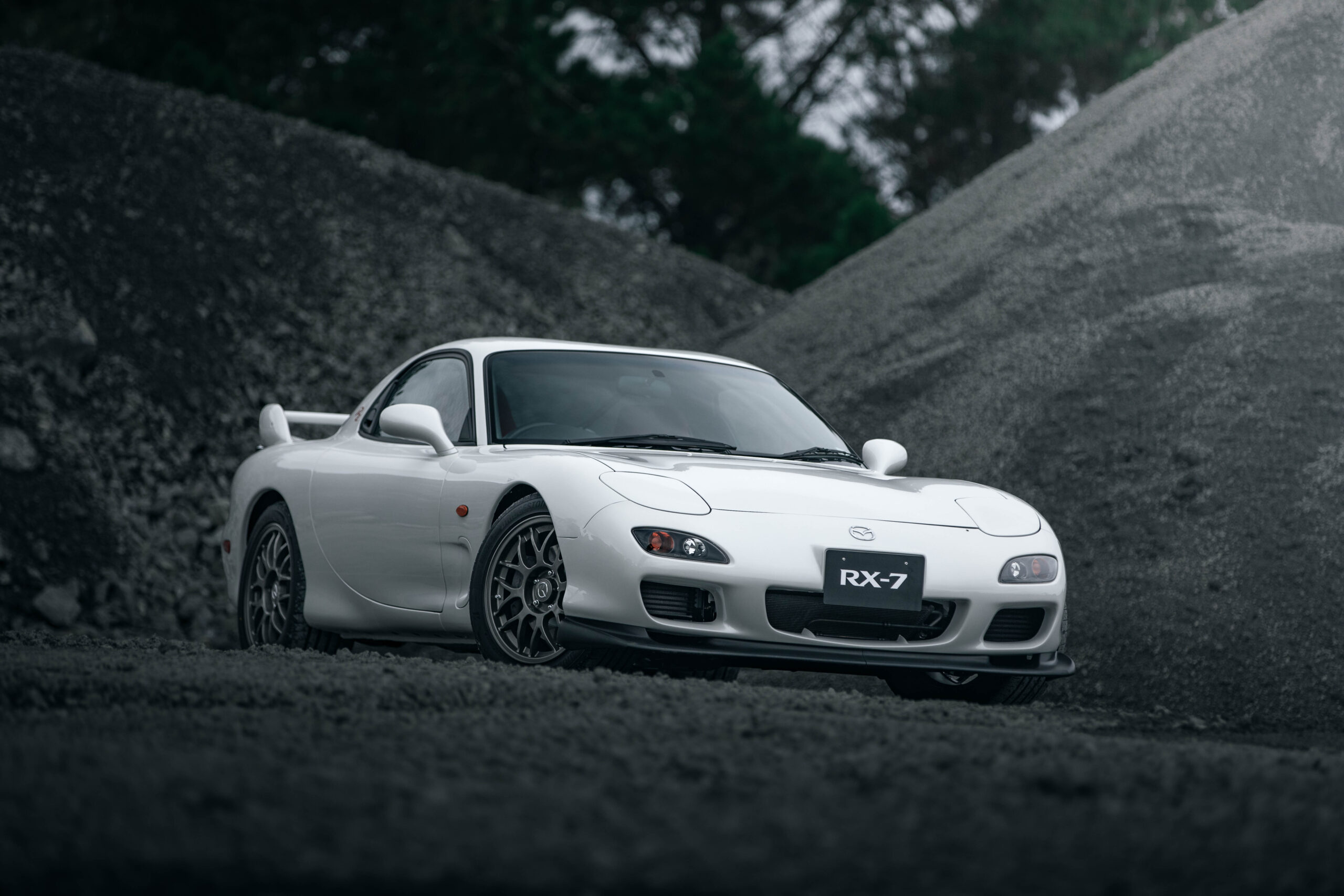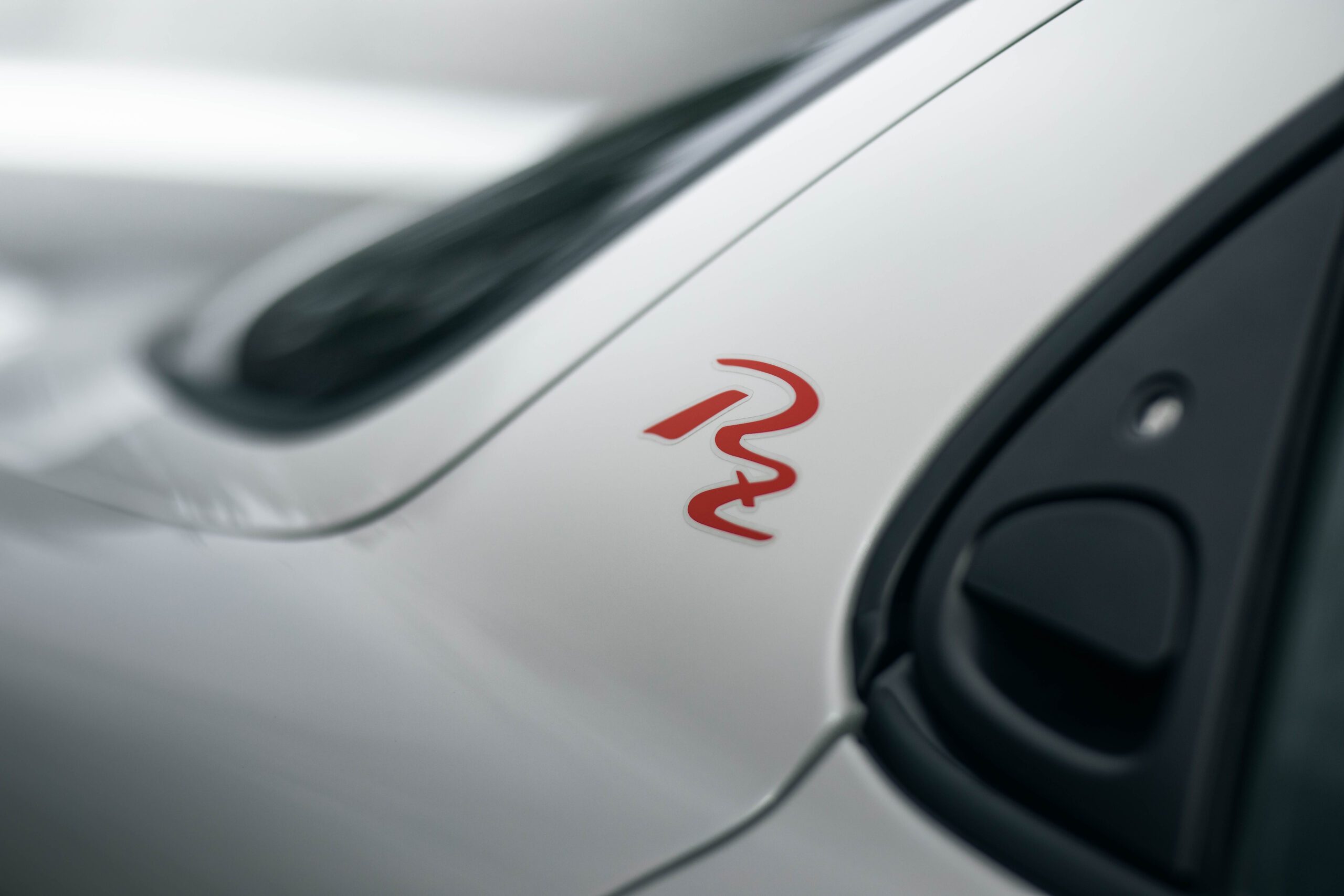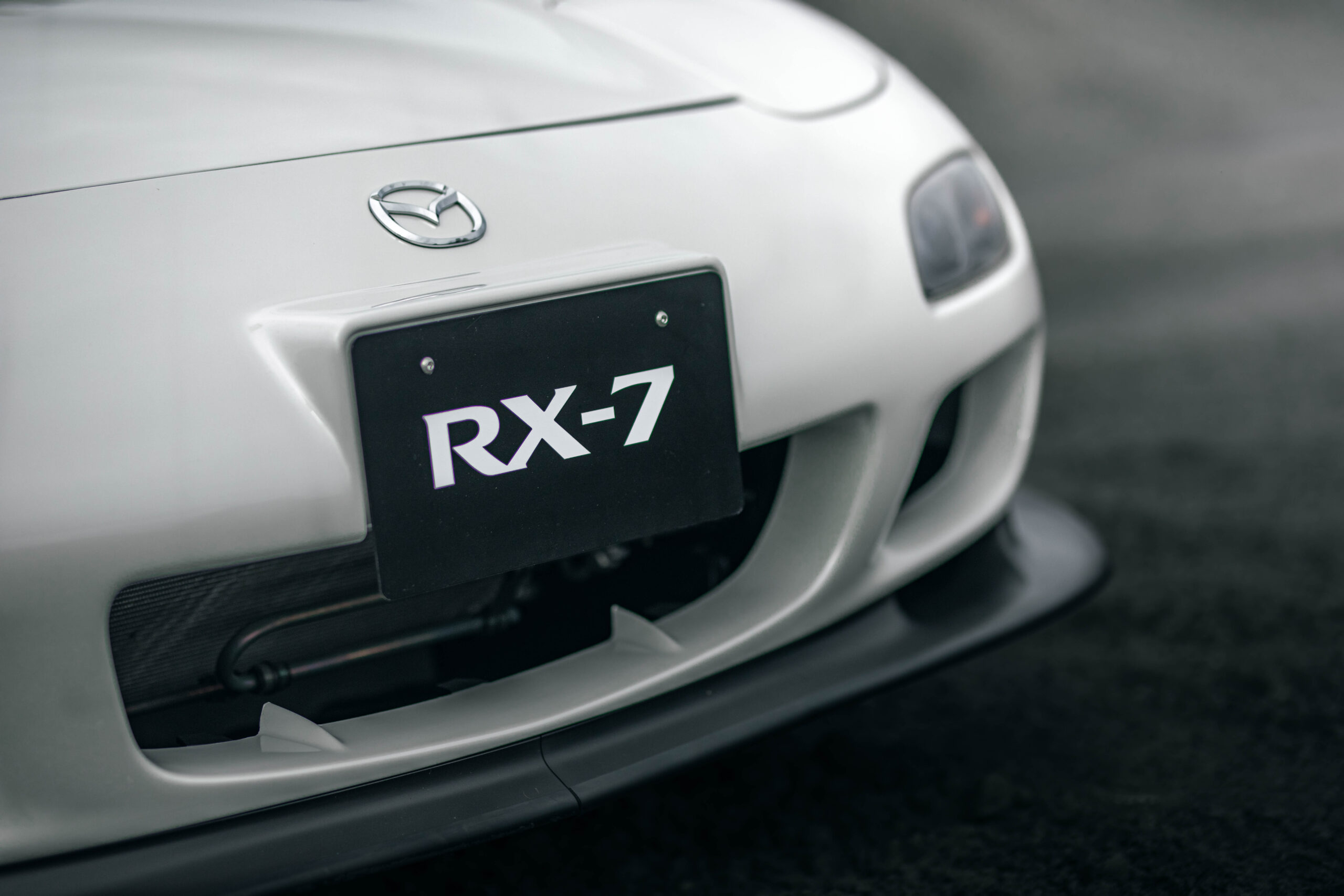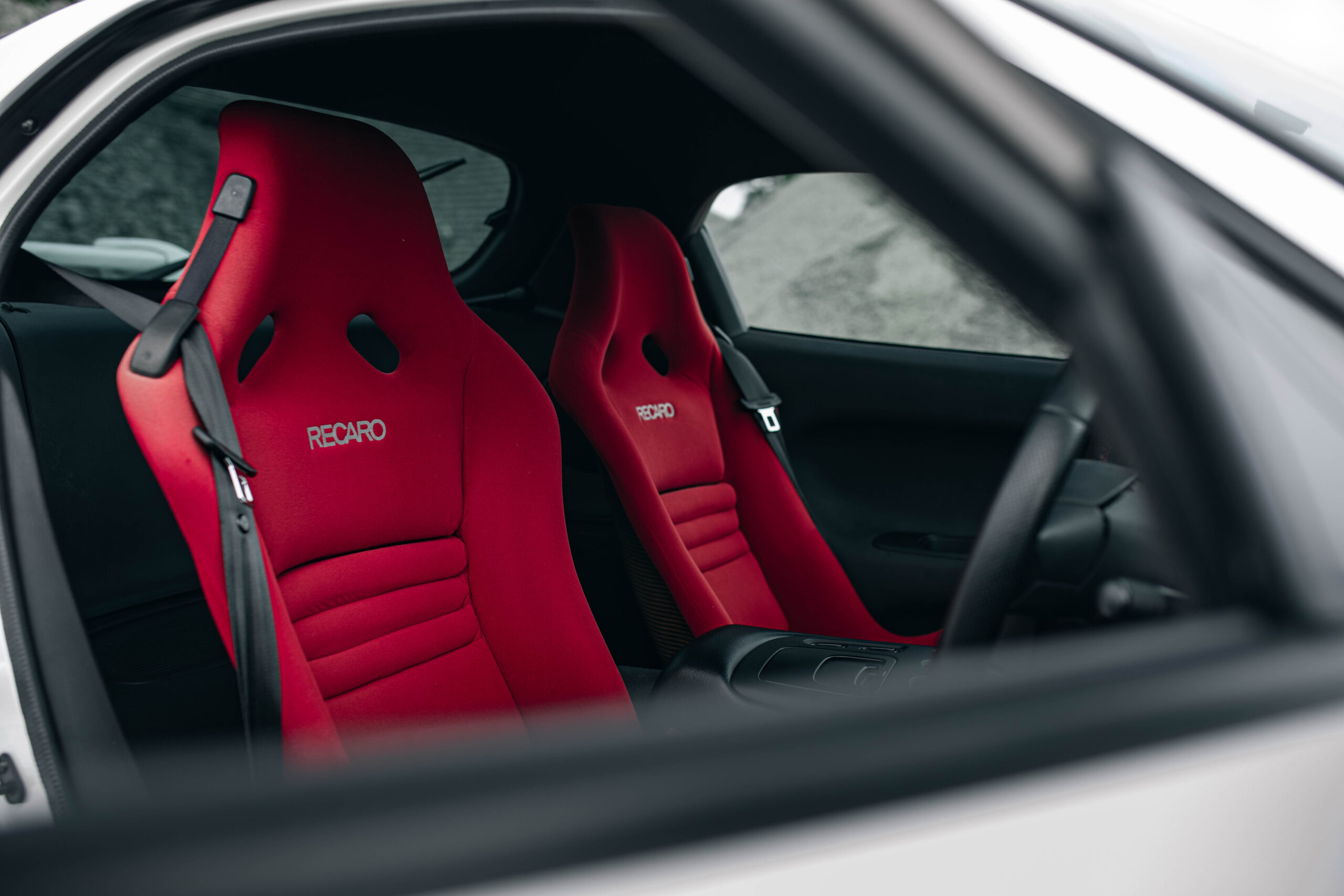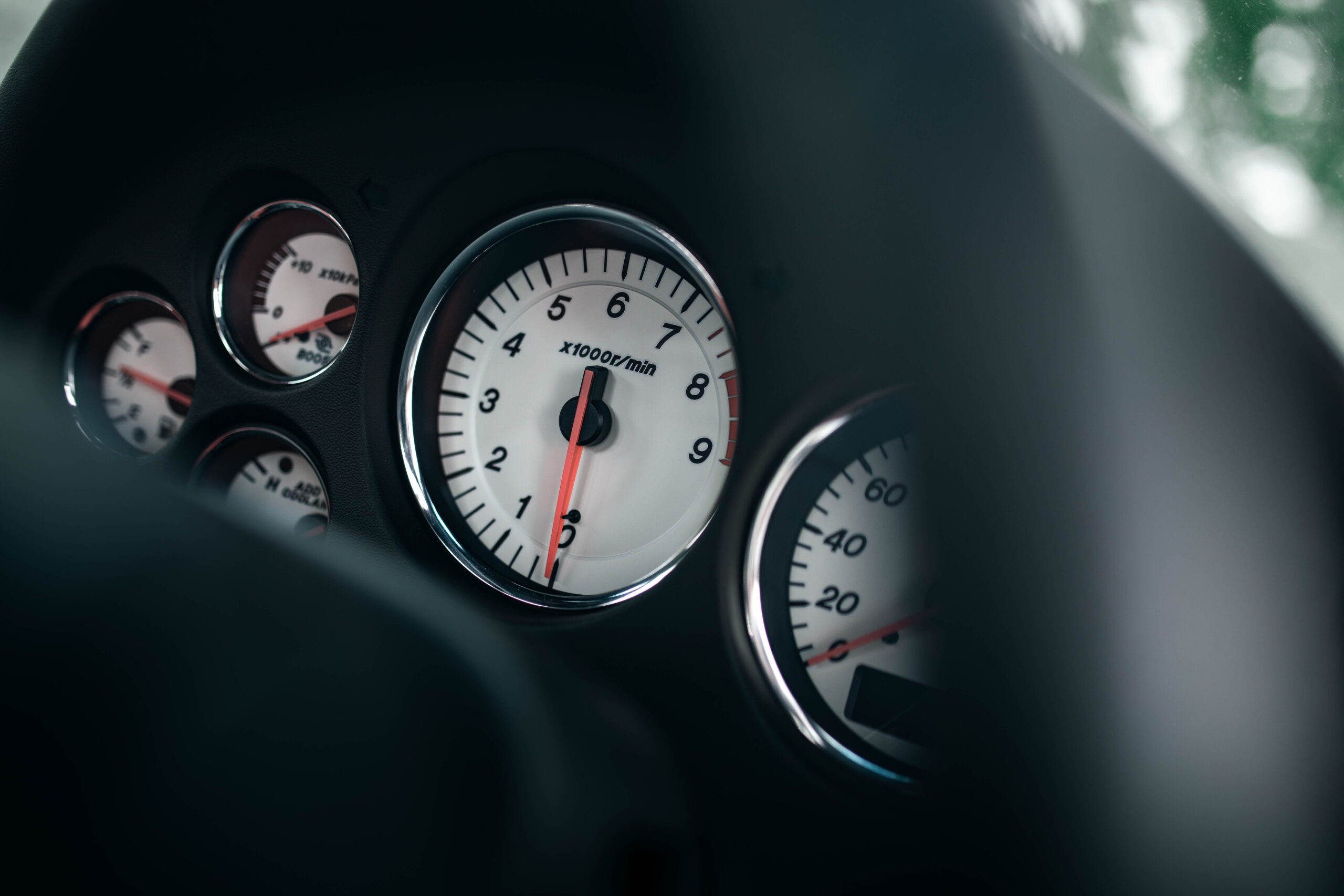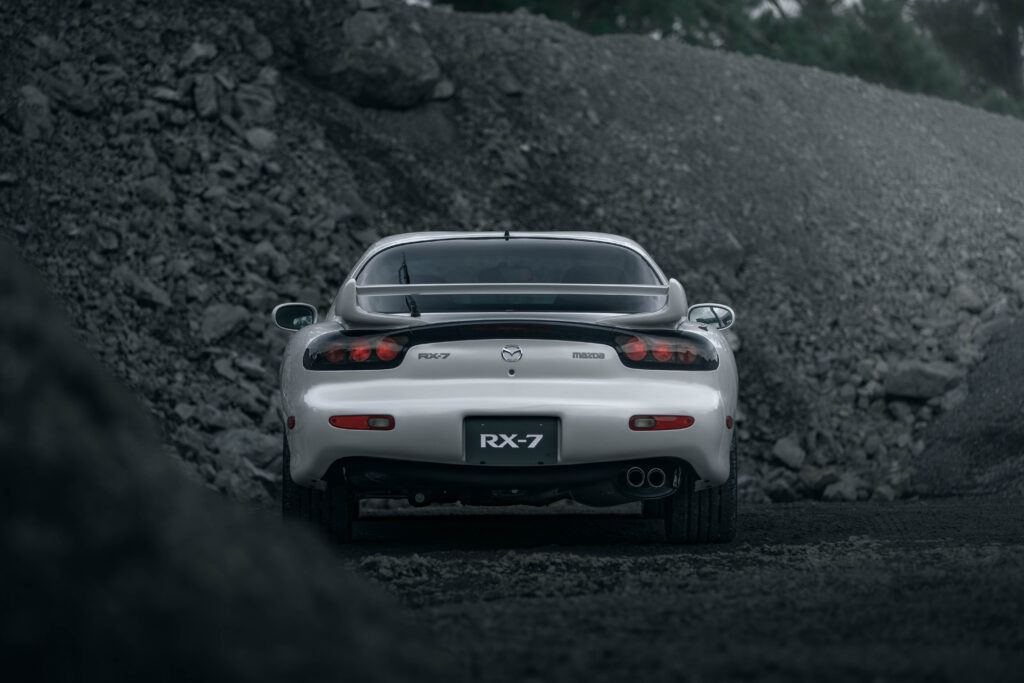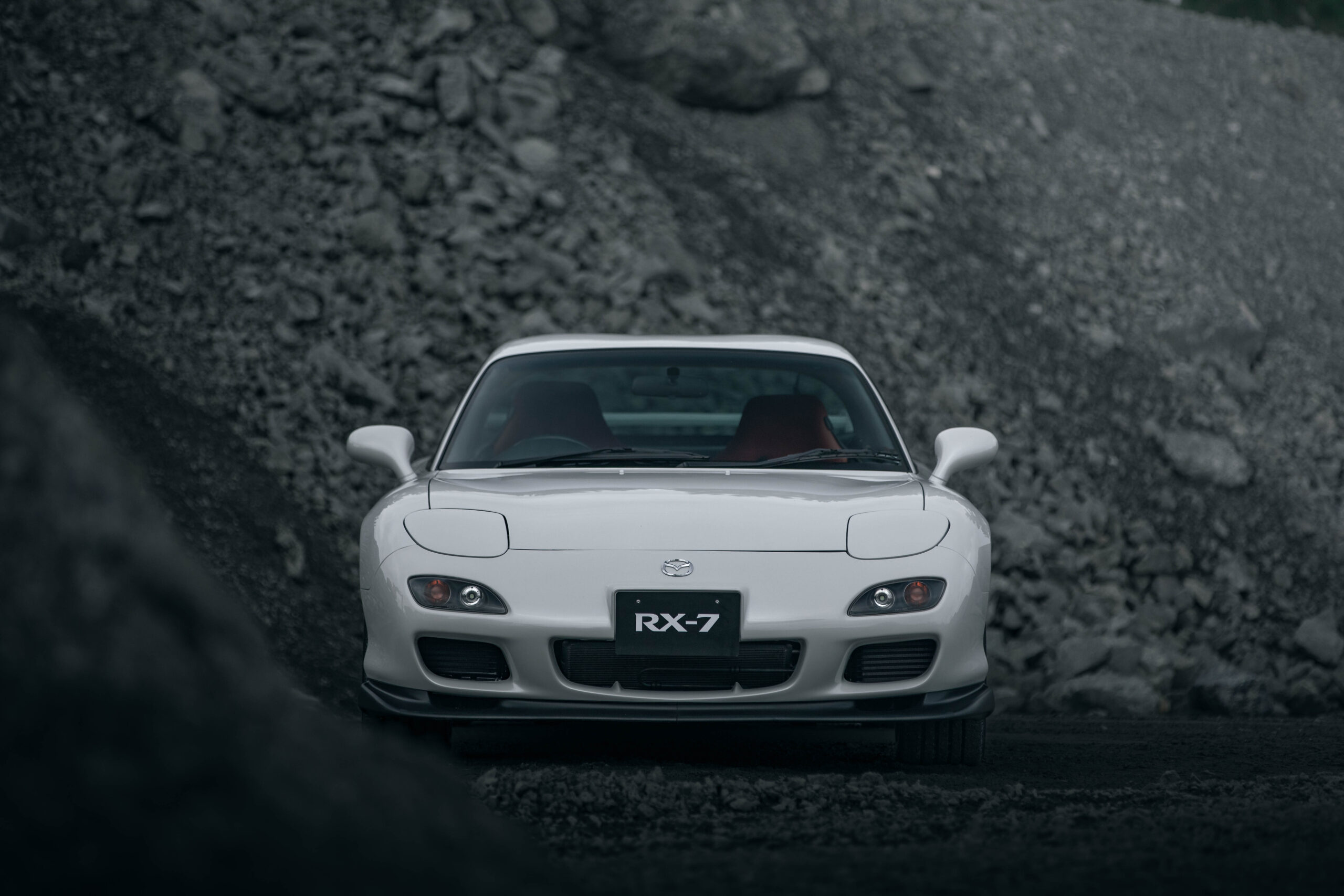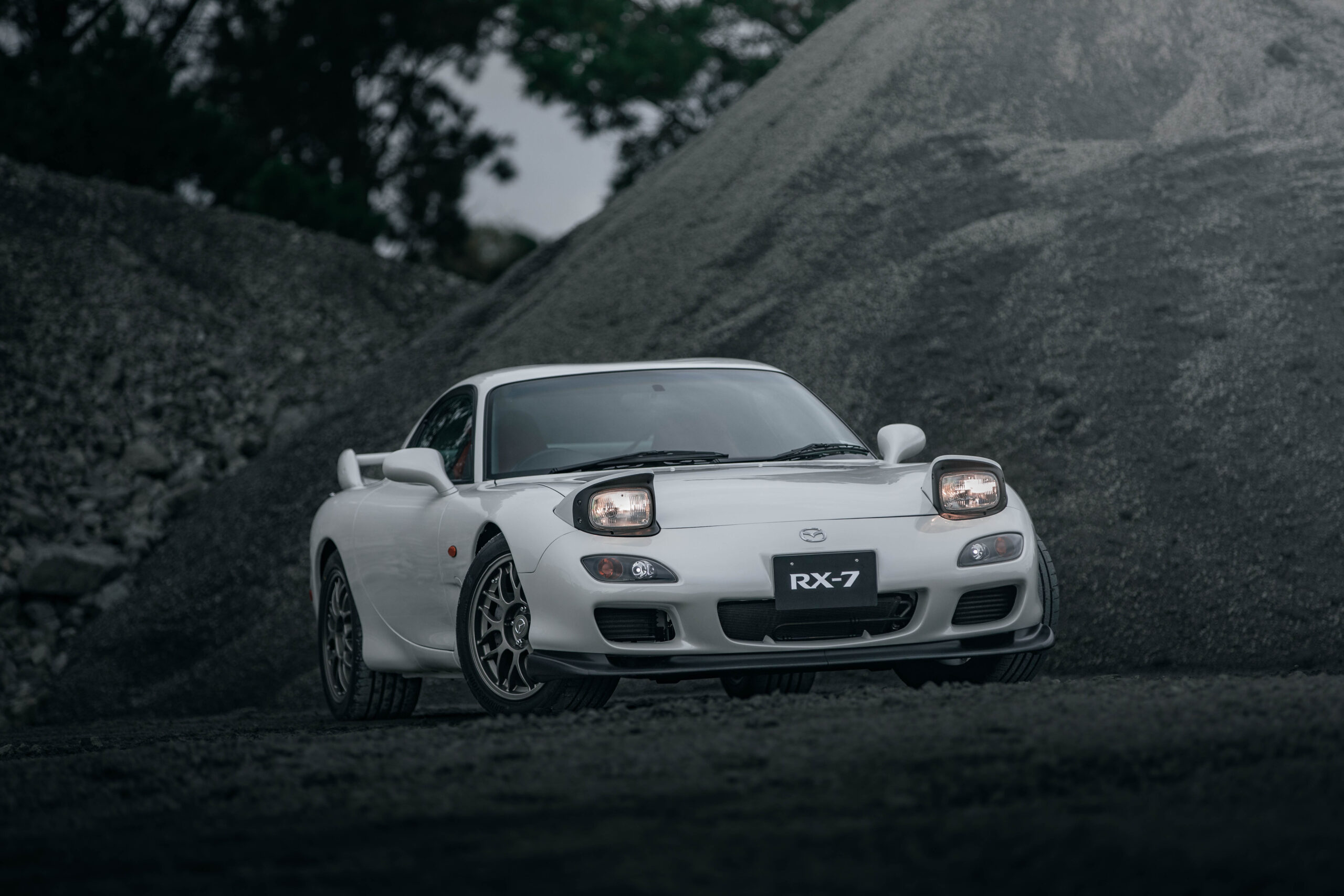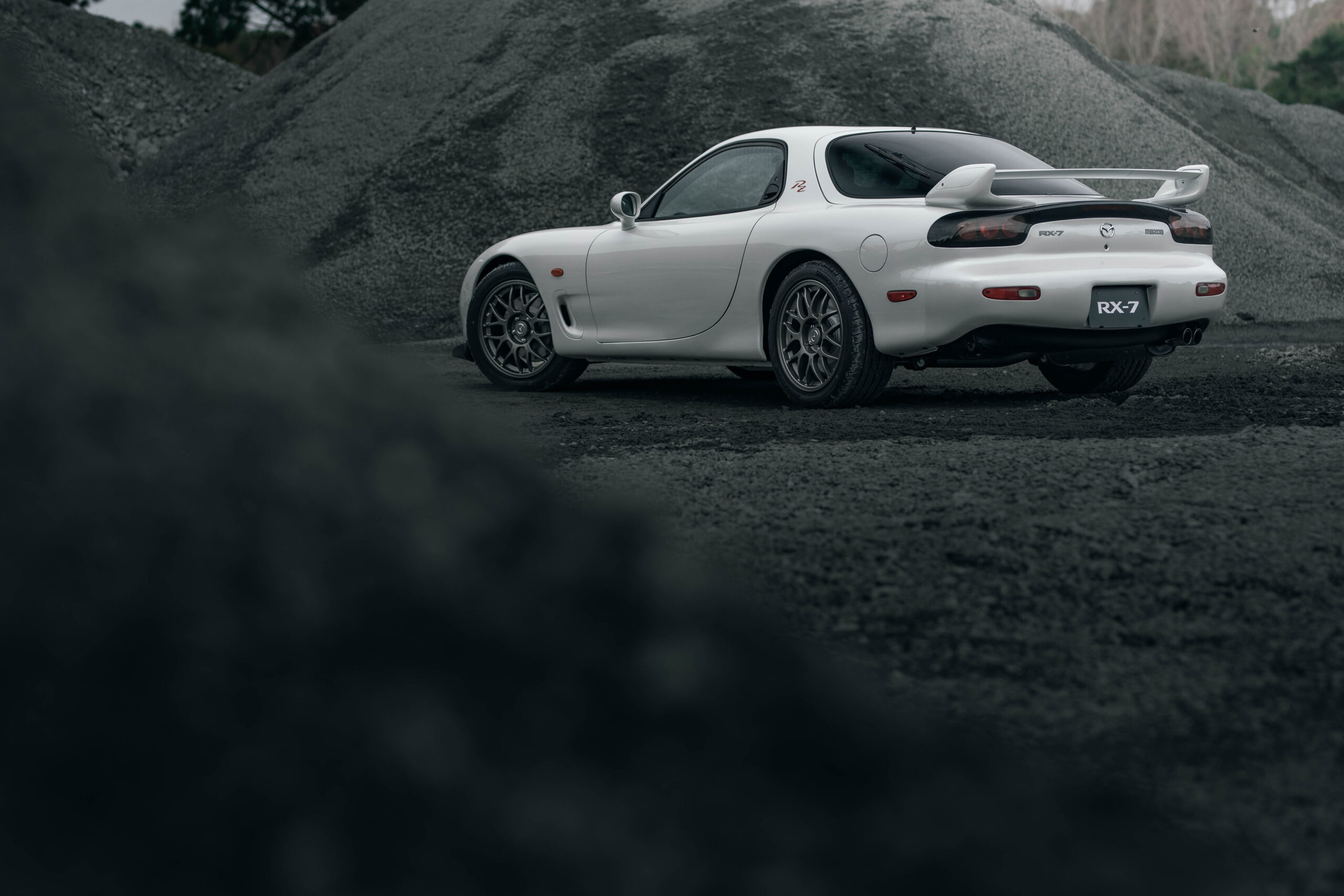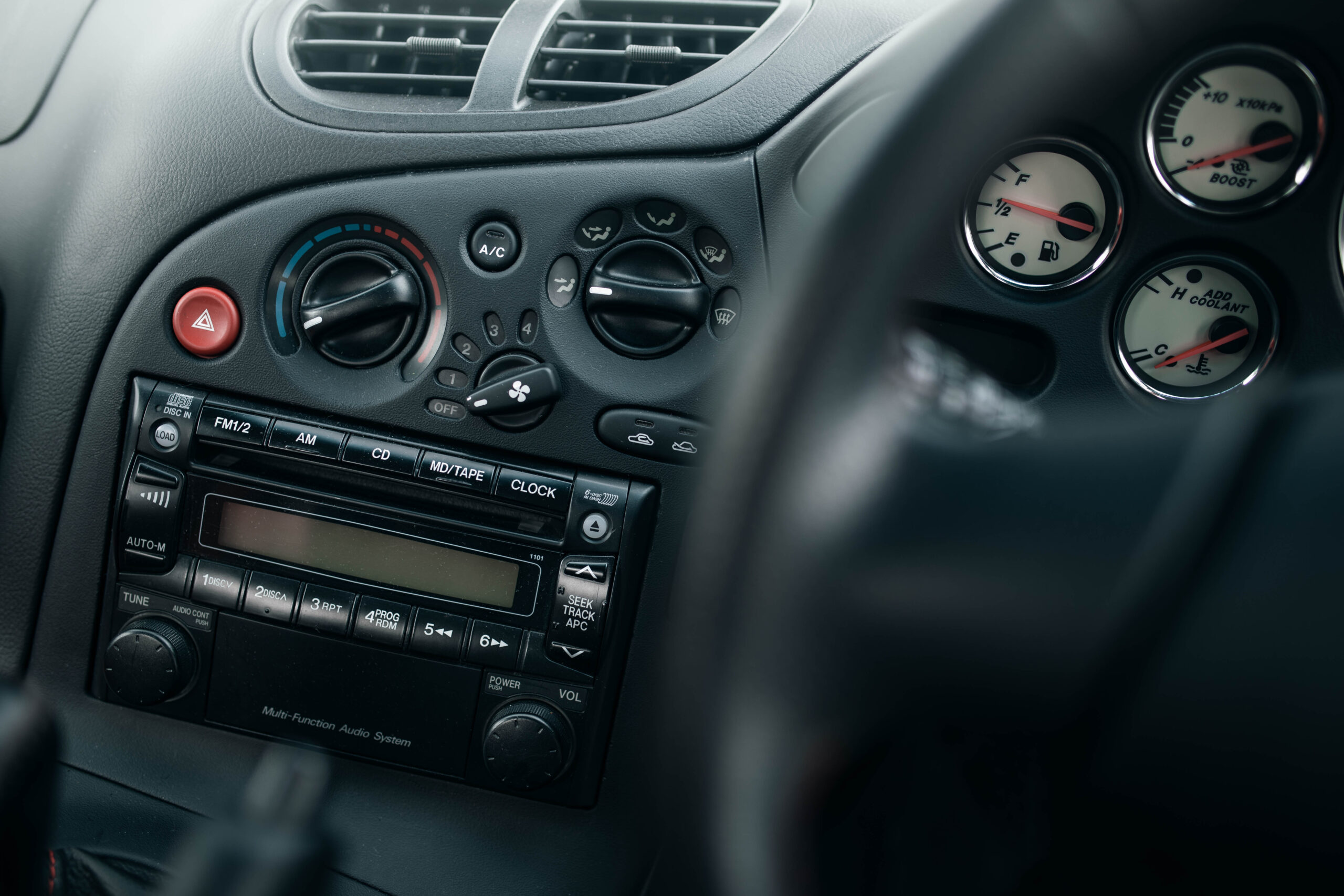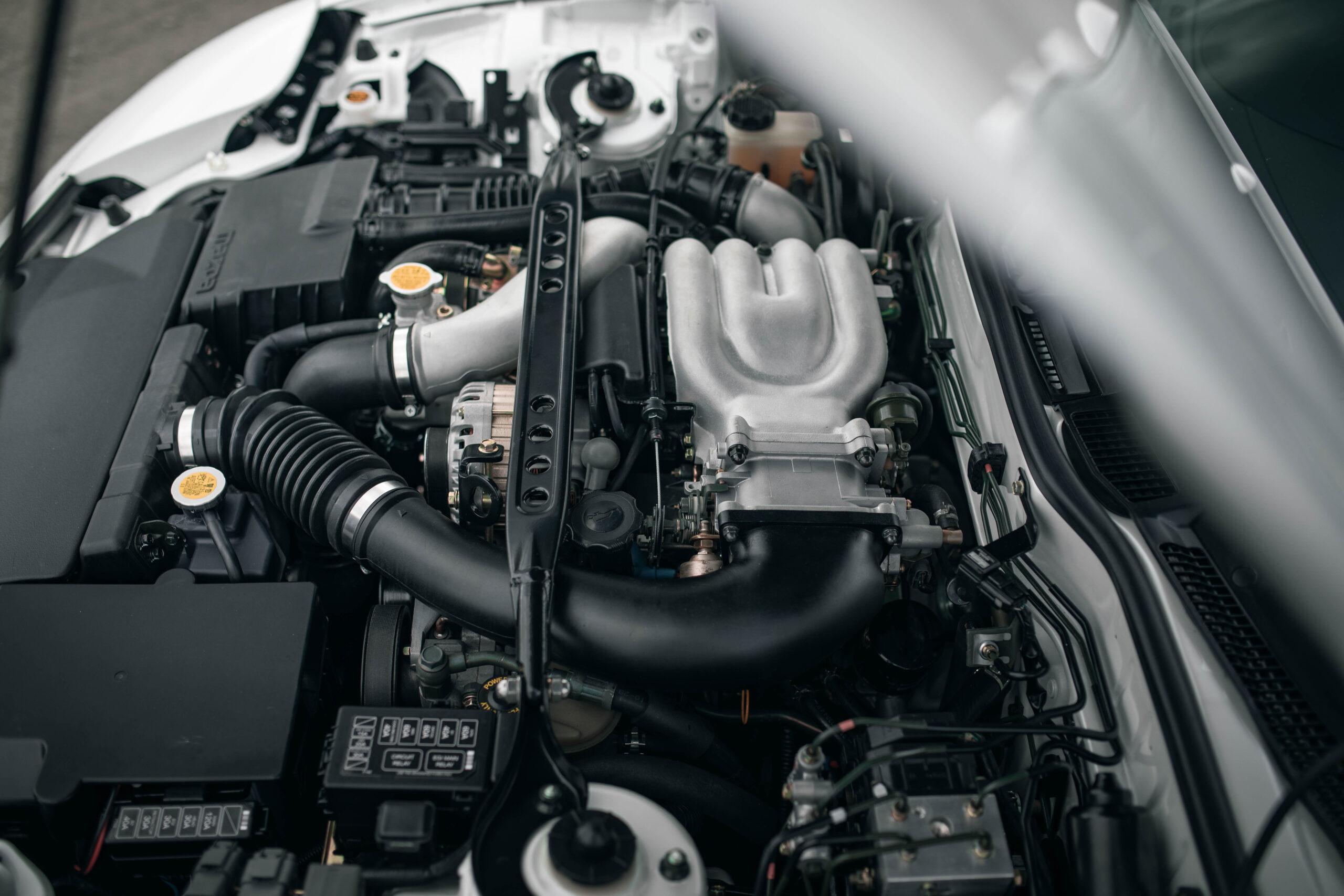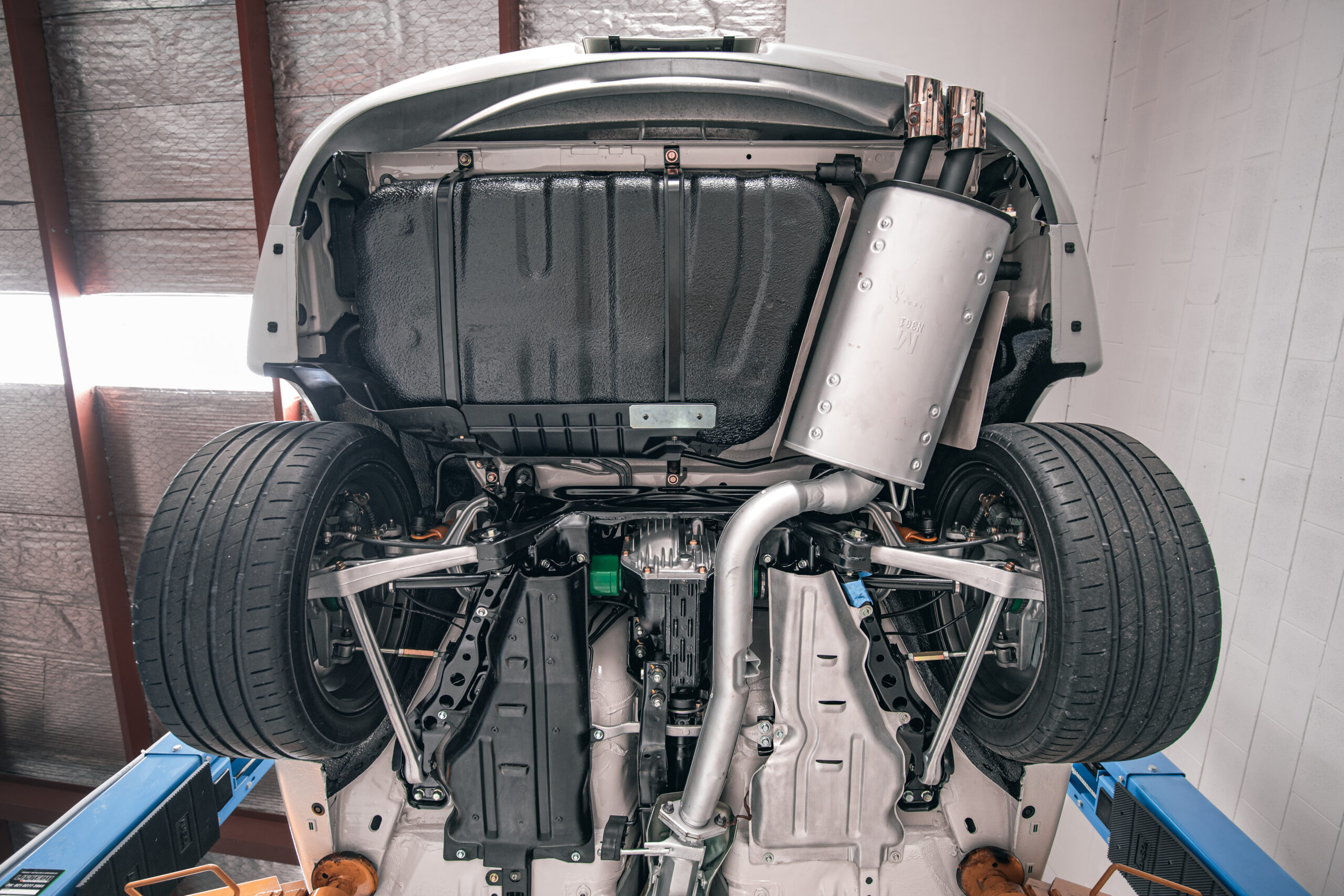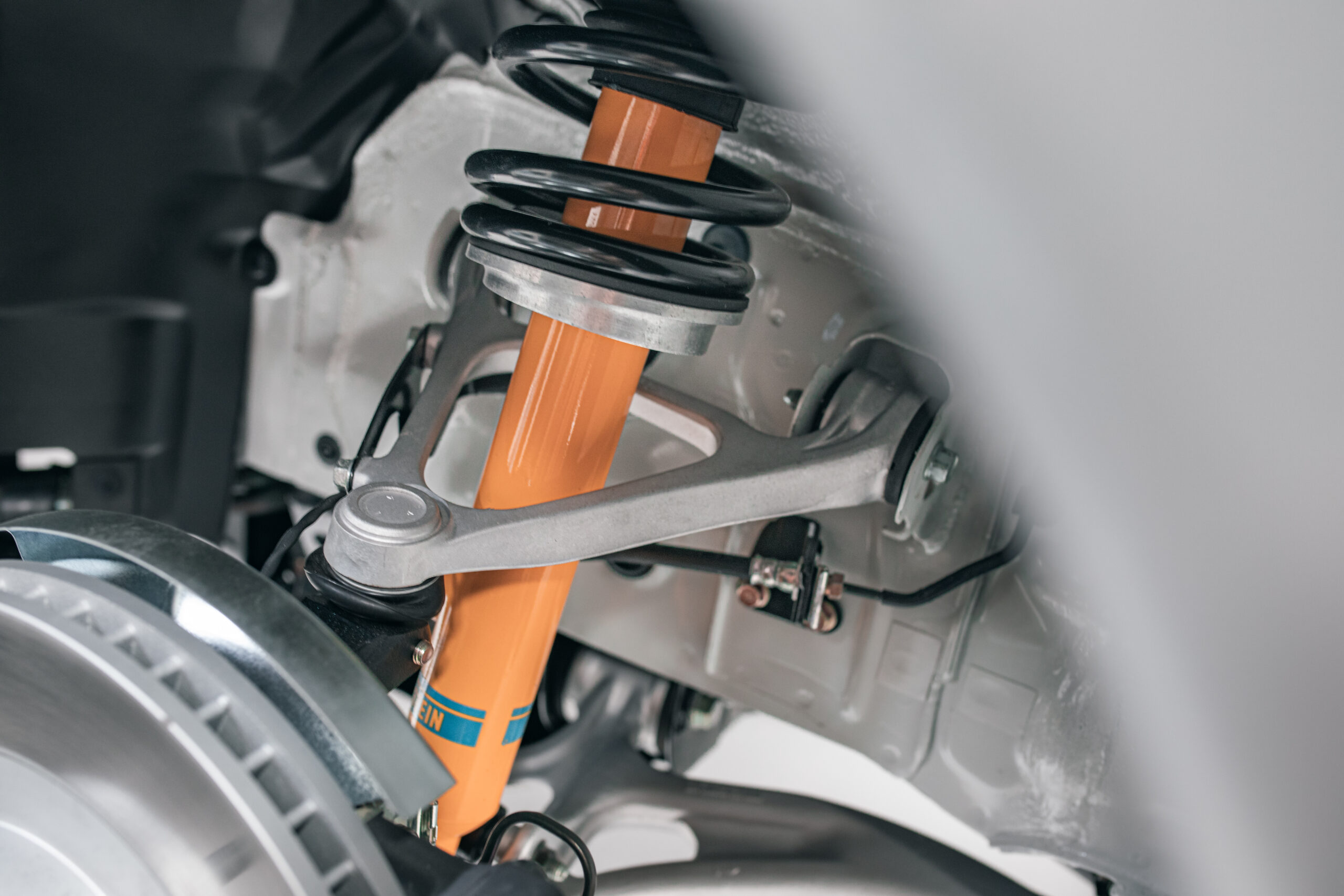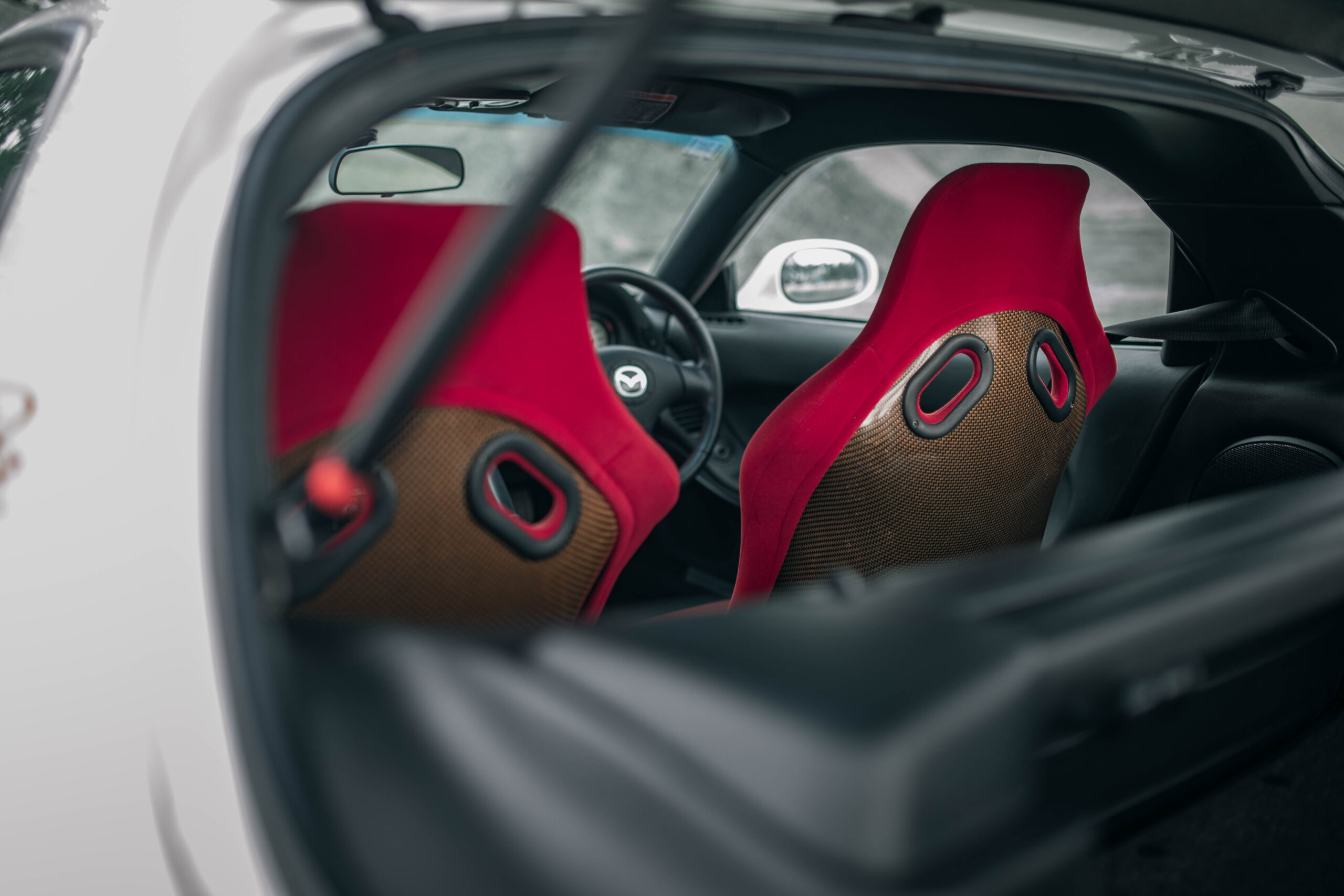Words and Photos: Richard Opie
In this ‘tuner’ car sphere we all so enthusiastically occupy, there’s a pretty staunch argument to be made for a conventional thought pattern to ‘stand out from the crowd’. It makes sense, right, that in a culture that since its inception has been dominated damn near exclusively by pushing the limits, to stand out you need to be concocting something wild. Innovation and imagination has long been at the forefront of creating a presence, or making some waves within this scene. Whether centred on bleeding-edge performance upgrades, or retina-assaulting aesthetic techniques, individuals have strived for years to create something representing their zenith.
It’s an attitude that’s come to epitomise this publication. NZPC has undoubtedly represented the cream of the crop — an aspiration for those pushing things the furthest to gain recognition from that immortalisation within these hallowed, tangible pages. So why the hell are you staring at a bog stock, 100 per cent completely as-it-left-Hiroshima Mazda RX-7? Because times are a’changin’ son, that’s why. Cars from the so-called ‘golden era’ of Japanese performance are rapidly becoming a hot commodity. Unless you’ve been living under a rock, the attainability has been on something of a decline, and as a result the appeal of unmolested examples has been going through the roof.
It’s given rise to something of a new appreciation for a crispy clean example of these machines we called heroes back in the day. This appreciation has caused values to do the same, as well as heightened the desire for OEM components and period-correct enhancements. But taking things back to a concours level? Surely we’re not there yet? Are we?
For FD RX-7 enthusiast (we’d be loath to say obsessive, but read on) Dave Higgins, he sure as hell is there already. And while you might know him from his work designing highly effective and aesthetic aero packages for race hardware in New Zealand and beyond, his 2000 Mazda RX-7 RZ represents a collision of cultures, expertise, and a detail oriented eye. Before the FD even appeared on the radar, Dave’s younger years saw him equip a toolbox well suited to embarking on the thorough restoration of one of Mazda’s rotary icons.
Cars have been a regular fixture in Dave’s life — since a very young age — with his father Paul being into cars of a slightly more classic nature. Progression from classic car trials would come in the form of competition, be it at the helm of classic single seaters, or behind the wheel of a slew of Porsche 911s competing in the Bridgestone Porsche championship. Dave reminisces fondly of days spent trackside. “We’d build a family holiday into the racing side of things,” he says smiling, “and I guess it really forged the family interest in cars.”
You could be forgiven for thinking an immersion of the Porsche kind would shape Dave’s taste in cars solely towards the legendary cars from Stuttgart. But by his own admission, he came up through high school just as the Japanese imports began to really stamp their mark on the scene, and his mindset. “Evo 3s were a love of mine, WRXs and, of course, the FD RX-7,” explains Dave. “My mates and I would go to the 4 & Rotary Nationals, check out Meremere, flick through Performance Car religiously, all that sort of stuff.”
But if anything really cemented the passion for the FD RX-7, it came by proxy of Porsche racing. “My dad was racing in Super GT at the time in a 911 3.8 RSR,” explains Dave, “and about that time Mark Porter was racing his 20B FD. I just loved it.” There wasn’t much not to like, with Porter’s home-brewed weapon screaming around Kiwi tracks, belching flames and creating quite an impression on the local circuit scene. At that point, Dave wouldn’t go on to get himself behind the wheel of the dream RX-7, instead getting a fix on circuits himself, with karting and formula Ford racing taking precedence over road cars.
Meanwhile, the family Porsche connection would manifest as the first major exposure for Dave to a thorough restoration. A 1973 911 2.7 RS, owned by his father for years, became the recipient of a serious nuts-and-bolts makeover, a refresh of such detail and consideration that it would go on to be a two-time winner at Ellerslie Concours in the team event. While he had no personal hands-on experience with the build, Dave explains that it further developed his eye and appreciation for a certain level of detail, one no doubt already in the process of being finely honed by preparing race machinery for weekend battle. Towards the end of the RS restoration, Dave and his dad would pitch in on an early Porsche 356 together as his first project, a rare car spirited away from Europe, only to languish for a frustrating decade before the Higgins decided to have a crack at it. “It was a huge project really, far too big of a job for me personally,” says Dave.
“We ended up sending it over to Italy to have it fettled by a specialist, and as such we couldn’t follow its progress.” Despite being finished to an international standard (think Pebble Beach quality), the 356 was sold on. Ultimately this would become the catalyst for the RX-7 dream. “Selling the 356 really started this whole thing for me,” mentions Dave. “This was really the passion I’d had for the RX-7 for a young age finally combining with me having the means to actually take on this project myself.”
With the decision made, the trophy had to be a specific model, the RZ variant of the final iteration of the FD, the Series 8. “I mean, I like all of the FDs, it’s all about the shape,” says Dave laughing. “But the Series 8, it combines that feminine shape with the subtle aggression of the front bar.” The RZ, it could be argued, is one of the most desirable. “It was either a Spirit R Type A, or an RZ,” explains Dave, “but the RZ ticks a lot of boxes for me; it’s collectible and rare, a car I intend to hold on to for a long time!”
Unveiled in late 2000, the RZ, in Mazda’s own words, was “a performance-enhanced limitededition version of the RX-7”. Surpassing even the Type RS as the peak of FD performance, the RZ added a few tasty extras in the pursuit of the ultimate RX-7 driving experience. The RS before it had already shaved off a good 30kg from its Series 8 stablemates. The RZ chopped off a further 10kg, thanks in part to the bespoke gunmetal BBS forged 17-inch wheels, 8-inch wide up front, and 8.5-inch at the rear. Additionally, a set of custom Recaro fixed-back seats took place inside, relegating the RZ to a two-seater configuration, in keeping with Mazda’s pure sporting intent.
The RZ also wears a specific hue. The ‘snow white pearl’ shade of paint is a silky smooth, striking tone on the FD’s timeless curves, and according to Dave, one of the key attractions of the RZ specifically. Beneath the sweeping bodywork, the RZ also featured specifically calibrated Bilstein shocks, otherwise sharing its suspension components with the RS-spec as well as the larger front and rear brakes.
Finally, Mazda equipped the interior with plenty of sporty red stitching. The leather Nardi wheel, shifter, shifter boot and handbrake boot all received red accents. Rear seats were substituted for storage bins, while a kneepad on the driver’s side for bracing in the event of spirited driving accompanied a foot brace for the passenger lucky enough to be experiencing some G-forces in the passenger Recaro.
But how rare is it exactly? Mazda’s original press release states they only intended to build 175 of the RX-7 RZ, however, demand led to just over 300 rolling out the factory door. While not the outright rarest of the FD chassis, it’s right up there — significantly more so than the RX-7s final hurrah, the Spirit R halo model! Dave’s the first to admit the RZ is something of a project that suffered from relatively extreme scope creep. “
The plan was to buy a car, bring it back here, tidy it up if needed and just use it,” Dave muses. “The RZ comes up so infrequently, so I had to pull the trigger pretty quickly on one that came up for sale privately in Japan. It had lower kilometres on it, not so low you wouldn’t want to drive it but low enough to retain value.” On its late 2021 arrival, the RX-7 didn’t quite meet expectations. True, the car was by and large an original example, save for a few bolt-on bits and pieces. But the biggy was the clouds of blue smoke that huffed from the exhaust when running. “The turbos were blown,” explains Dave, “so needing to repair those really started the whole path to a full restoration.”
It also was evident the RX-7 had been sitting outside for a while, thanks to tarnished alloy components, fade on the scarlet Recaros, and numerous rusted bolt heads, the latter in turn staining the pearl white paint and ultimately presenting Dave with an aesthetic that he admits, “I couldn’t really live with, not with my OCD! “I knew as soon as I started with the turbos, it’d just become this thing,” sighs Dave. “It was a case of one thing leading to another, once I’d pulled the engine to get the turbos rebuilt I started on the engine bay nuts and bolts, then it needed to be repainted, then it all started to spiral.” Despite being unplanned, the refresh would spiral to such a degree that it would become apparent that, given his experiences with Porsche restoration, the FD was in fact likely to end up finished to a quality that would lend itself nicely to being displayed at a concours event — even if it wasn’t destined to be a winning car.
Early 2022 saw the build begin in earnest, with a fast strip down in his shed. “Once I decided the bay needed painting, I then made the call to do the underside,” Dave explains. This of course entailed a total refinishing and restoration of even the most minute parts. As the vehicle was stripped, every component was photographed and catalogued, ensuring strict attention to detail. The bare shell was wheeled into Flow Line Customs, receiving a deep new coat of Snow White Pearl Mica. In the meantime Dave was hard at work refreshing FD parts strewn throughout his shed. Every single aluminium suspension arm is “as new”, complete with bushings. Parts like brake backing plates, heat shields, and guards are all either brand new, or replated in the correct tone.
Plating, as it happens, was a challenging affair when it came to parts that couldn’t be acquired new. There’s three distinct colours of plated bits and pieces on the FD: gold zinc, silver, and olive drab. Dave actually enlisted separate companies to handle each, a glimpse into the dedication required to achieve that OEM level detail. “I basically begged Richard to do the engine for me, they don’t generally do stock rebuilds,” says Dave of the Green Brothers refreshed, bog-stock 13-BREW. It’s snuggled into the immaculate engine bay and adorned with a full complement of dazzling ancillaries, from the aforementioned turbos, to a thoroughly reinvigorated intake and throttle body. Everything is present and correct under the bonnet, from the ABS unit to plastic components. It’s possibly even better than a new one, testament to an eye for detail. The interior, Dave reckons, proved one of the tougher aspects. Plastic trims are difficult to repair and refinish to OEM standards, meaning the painful task of sourcing excellent examples, or in the case of the rare, bespoke Nardi wheel, entrusting experts to renew their original lustre. With roughly a year’s hard yakka on the job, as the 2022 Ellerslie Concours loomed the RX-7 neared completion. Thankfully for Dave’s sanity — remember he’d been living, breathing, and pretty much eating FD RX-7 for 12 months solid — the event was postponed due to a chick named Gabrielle with a vicious temper, but come April 2023, the Mazda was ready to go.
“There’s a lot of cotton buds, toothbrushes and fine cleaning,” Dave explains, “but I had some good tips and tricks from trim guys and detailers about all the right products to use. You don’t know how detailed the judges are going to be on the day, but my level, in my head, is pretty damn high.” Entered alongside Tim Wood’s Series 1 RX-7, Dave’s FD was clearly the newest car among the team’s competition at Ellerslie, something that automatically puts a car from the era on the back foot thanks to point deductions based on age. In fact, the FD was already 23 points adrift before an eye had even been passed over the car.
A top four finish would have been commendable for the team, Dave reckons, but when prizegiving came around the pair of immaculate Mazdas placed second overall. “It’s probably the first for a Japanese car of its era to compete at Ellerslie,” says Dave with a wry smile. It might not be the last, either, with the way things are progressing around classic Japanese car culture. As for Dave, this probably isn’t the last we’ll hear from him, with his wife Helen’s Honda City Turbo in line for the treatment as well as another very special FD3S RX-7, this time a race car — you might’ve read about it already! Either way, we can be assured the level of authenticity and detail will be painstaking — a stand out, by any other definition.
_________________________________________________________________________________________________
This article originally appeared in New Zealand Performance Car issue 304





